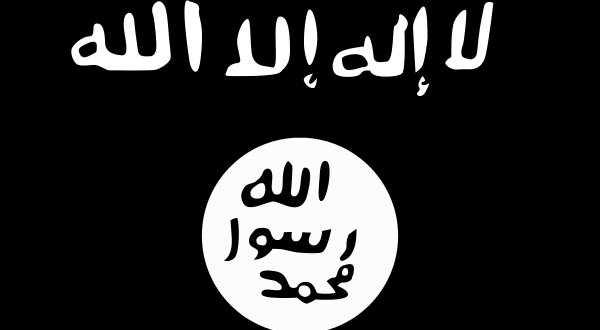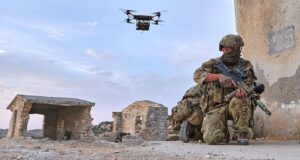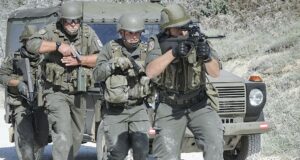Sheikh Mukhtar Robow and the nationalist faction within al Shabaab rejected the foreign fighters’ internationalist vision, attacks on humanitarian aid agencies and innocent Muslims and resented the idea of Somalia being just another battlefield for the global jihad[31]. As such, al Shabaab’s internal “friction” spilled over onto the internet, where senior figures such as Omar Hammami, an al Shabaab military commander, propagandist and closely linked al Qaeda operative, openly warned that personal and religious differences between Somali and foreign fighters imperiled the group[32]. Omar made a telling comment that “we are afraid that this conflict might end soon in the favour of those who don’t want the battalions of global jihad to take off from the Land of the Two Emigrations [Somalia]”, which shows the true extent of al Shabaab’s own internal doubt about their future.
This situation for al Shabaab is constantly being exacerbated by AMISOM and US drone strikes which have seen foreign fighters promoted over local fighters and the forced recruitment of Somali men and children to swell the diluted and quarrelsome ranks[33]. As such, defection rates have been consistently high in 2013 with over 1,600 former fighters currently being rehabilitated by the Somali government with UN funding[34].
In this light we must look on the Westgate mall attack as a vastly important tale in the history of al Shabaab. It comes at a time when its power is declining and its own internal problems have caused immense difficulties in operating as a coherent fighting force. While al Shabaab’s alliance with al Qaeda has been interpreted as a cynical ploy to open itself to donations and a vast pool of experience foreign fighters[35], it has also exposed it to the wrath of the United States and European Union[36]. As such it has seen its power eroded at the time when it needs it most to counter the African Union onslaught against its key territorial positions. The Westgate attack can therefore be seen as a dangerous sign of how al Shabaab will deal with its decline. It is likely to continue to resort to violent and desperate surprise attacks with the aim of killing and maiming as many non-Muslims (designated as khuffar) and Muslims deemed apostates (a practice known as takfir) as possible.
These attacks challenge intelligence agencies as they are difficult to detect and intercept, or, as in Kenya, even if they are detected they can often be sidelined in contradictory intelligence reports. Spectacular terrorist attacks which will dominate headlines and rolling new coverage, can be achieved at the expense of only a few well-trained martyrs. Whilst strategically these attacks are futile, they should be seen as the death throes of a wounded organisation in decline. As a demonstration of this, that there has been a recent spike in violence against soft targets in Mogadishu is, in the words of analyst Hassan Adukar; ‘perhaps to distract its fighters from debilitating fragmentation among its leaders’[37], these serve only to mask the internal and external factors which are hastening its demise.
The international coverage of the attack in September will most likely accelerate the pace of arrivals of foreign fighters, which will only lead to further internal conflict and alienation of the Somali population and diaspora. The most worrying factor for the Somali Transitional Federal Government and for the international community is the potential for al Shabaab to split into rival factions with the nationalists peeling away from the hardliner Islamist extremists. In July 2013, al Shabaab emir, Ahmed Adbi Godane successfully mounted coups against rival internal factions led by Sheikh Hassan Dahir Aweys and Mukhtar Robow, killing veterans and founders of the movement[38]. Without a constraint on its behaviour, the nationalist factions could seek to regain ground in a new-wave revival of its fortunes (if it survives the purges), whilst more realistically the hardliners will seek to concentrate on meeting their own radical and dangerous international aspirations over its failing domestic attacks. Al Shabaab is beyond a crossroads in its history. The group stands to lose everything, but how it goes about responding to that loss is potentially the most dangerous aspect of its demise. We have yet to see al Shabaab last hurrah.
 Human Security Centre Human Rights and International Security Research
Human Security Centre Human Rights and International Security Research




